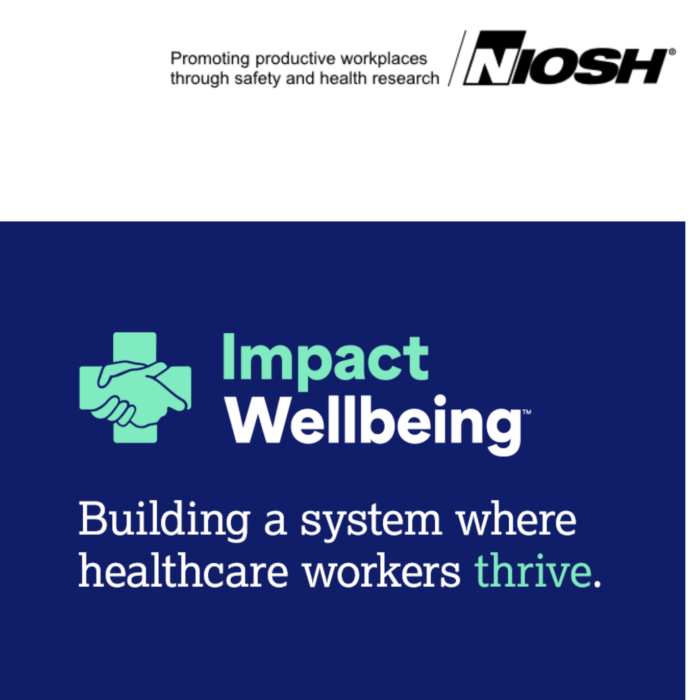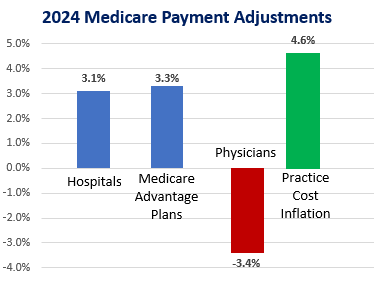CDC Launches Initiative to Tackle Burnout. Really?

Here comes the government to save healthcare workers:
The CDC’s National Institute for Occupational Safety and Health (NIOSH) on Tuesday launched the Impact Wellbeing campaign, a campaign to provide resources to hospital leaders to ease burnout, encourage help-seeking, and improve well-being among the healthcare workforce.
So, what’s the motivation behind this?
Chosewood said NIOSH recognized that basic “resiliency” training or even a high-quality employee-assistance program would not be enough to address such long-standing problems as harassment, inefficiencies, and long hours with lack of adequate time off.
Okay, that sounds pretty good.
“And that really is the focus of this campaign — senior leaders and frontline managers listening to workers, allowing them to participate in decision-making, letting them identify where … their pain points or their pressure points are, and then turning that feedback into workplace policies and practices,” Chosewood said.
Senior leaders? Frontline managers? Is this going to change them? Where’s the Family Feud buzzer?
The primary tools included in the campaign are the NIOSH Worker Well-Being Questionnaire (WellBQ), the Total Worker Health workbook and trainings, and a toolkit developed by the Dr. Lorna Breen Heroes’ Foundation meant to support the removal of intrusive mental health questions on licensure and credentialing applications
Yes, putting down mental issues in any form is an issue for doctors. And this won’t change that, unfortunately, because they DO NOT trust their hospital administration.
Now for the fluff that will never work. Are you ready?
In addition to the foundation’s toolkit, the WellBQ survey aims to gauge workers’ well-being and identify workplace challenges. Questions touch on trust in management, safety of the physical environment, discrimination, bullying, work-related fatigue, sleep, and mental health.
And the Total Worker Health initiative offers web-based training programs, focused on teaching frontline supervisors to help staff manage work-life balance. It includes webinars for safety support, sleep support, and veteran support.
There’s also a leadership storytelling guide meant to invite management to share their own mental health challenges and encourage employees to seek help.
First, docs don’t like filling out surveys. They don’t trust that they are anonymous. Second, docs won’t do web-based training programs or listen to people who attended them. And don’t get me started on the storytelling guide.
BTW, this doesn’t help:

There is only one way to find out if a hospital is physician-friendly and that is by doing an NPS score. See here for more info but the basic question is:
On a scale of zero to ten, how likely is it that you would recommend this hospital to a colleague to come work here?
There are more details in the link but the bottom line is that if the score is low, and most are, then you can work on fixing it. This is the only way to measure success on this topic. You can do all storytelling and web training you want but it won’t work if you don’t know if what you ae doing is helping.









About 10 years too late
The earliest example of proper management in healthcare comes from Matthew 13:
“ Then he told them many things in parables, saying: “A farmer went out to sow his seed. As he was scattering the seed, some fell along the path, and the birds came and ate it up. Some fell on rocky places, where it did not have much soil. It sprang up quickly, because the soil was shallow. But when the sun came up, the plants were scorched, and they withered because they had no root. Other seed fell among thorns, which grew up and choked the plants. Still other seed fell on good soil, where it produced a crop—a hundred, sixty or thirty times what was sown. Whoever has ears, let them hear.”
Of course, this was about spreading of religious doctrine. It also tells something about management. Don’t blame the seeds for not thriving when you do not care what you do and what their conditions are. Seeds on rocky soil burn out. As Jesus implies here, “well, duh, Sherlock!”
So you have docs who are already fatigued, burned out, and you want them to do more work – surveys, webinars, etc?! And lets let the people who lead this ‘reform’ be the people who caused it in the first place. Brilliant!
EXACTLY!!!